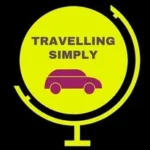
We clear Croatian border control and follow our trusty GPS, acres of fields and pastures flanking us on both sides of the road. The signage is clear and we continue our leisurely pace enjoying the scenery.
We know we are close to the city as the traffic becomes heavier but are surprised when the GPS suddenly comes to life, reminding us that our turn is up ahead. Why are we surprised? We have booked to stay in the centre of the city and there is no sign of city life even though the GPS tells us we are only a couple of kilometres from our destination!
“You have arrived at your destination on your right”, says the confident voice of the GPS as we pull up in front of a small farmhouse in the middle of nowhere. The address list is retrieved from the bag. Yes, we have plugged in the right address! If all else fails, enter the GPS coordinates and this confirms our suspicions; we are still another 30 minutes from our destination!
The Croatian capital city, Zagreb, is often bypassed by travellers who are lured to the popular cities of Split and Dubrovnik and an island or two off the coast for the ultimate Croatian experience.
We second guess ourselves as we drive into the city passing row upon row of utilitarian apartment buildings from the communist era. The roads are wide and easy to navigate but there doesn’t seem to be any old-world charm in sight.
Early impressions are quickly dispelled when a turn or two later, we are in the heart of Donji Grad, Zagreb’s historic Lower Town. Our host, “call me Porchca” is waiting to guide us into the no access area and into the apartment’s private parking area. We are not disappointed by our choice of accommodation, it is a spacious and cosy apartment just metres away from cafes and restaurants and beautiful green spaces. Bustling Jelacic Square is only a few hundred metres further.
Our highlights (in no particular order):
- Enjoying outdoor music and activity in Park Zrinjevac, a beautiful green space in the Lower Town and just metres from our apartment which has been transformed into a night festival with food stalls and live music. No crowds and very family-friendly.

Summer festival in Park Zrinjevac
- Watching international performers entertain larger audiences with classical concerts and dancing on the main stage in Jelacic Square.

Evening entertainment in Jelacic Square
- A morning walk to the expansive Maksimir Park in the middle of Zagreb through the streets and local markets peeking into doorways and shops along the way. An opportunity to observe the people of Zagreb go about their daily business. We remember a lovely older woman stopping to make sure we were okay as we tried to reorientate ourselves in a marketplace. She spoke no English and us, no Croatian.
- An afternoon exploring Gornji Grad (Upper Town), strolling along the almost empty cobblestone streets and similarly empty St Mark’s Square allowing us to appreciate the beautiful St Mark’s Church and its multi-coloured tiled roof.

St Mark’s Church with its distinctive tiled roof
- People watching around the vibrant Dolac fruit and vegetable market.

The wonderful array of fresh produce at the markets

- A visit to the Museum of Broken Relationships. Set in a baroque palace in the Upper Town. The brainchild of a couple who remained friends after their own relationship had broken down, the couple started collecting anonymous donations of relics from Zagreb residents whose relationships had suffered a similar fate and created this interesting concept. Sounds a little quirky but well worth a visit.

For a capital city, Zagreb still maintains a small-town feel and without the usual summer crush of tourists, we were able to wander about the Lower and Upper Towns freely.
All in all our time in Zagreb was a greater pleasure than Split or Dubrovnik.
P.S. – Our recommendations:
Located in the heart of the Lower Town, Apartment Atrium Plaza was the perfect place to stay. Newly renovated, clean and spacious, within walking distance of all attractions, numerous dining options outside the secure compound and superb hosts.
Exploring the streets a short distance from Park Zrinjevac, we found a wonderful place to have dinner. Heritage serves traditional Croatian food in the form of street food. Their menu offers the opportunity to try dishes from all the regions in Croatians accompanied by local wines and craft beers.
Have a spare day to kill? Take a day trip to the charming city of Ljubljana in Slovenia only two hours away by car and about the same by train. Explore the old city known for its beautiful bridges, green spaces, lively marketplace and Romanesque architecture. Then, take a leisurely drive back to Zagreb on the back roads which wind through some of the most picturesque scenery we have seen in Europe.























